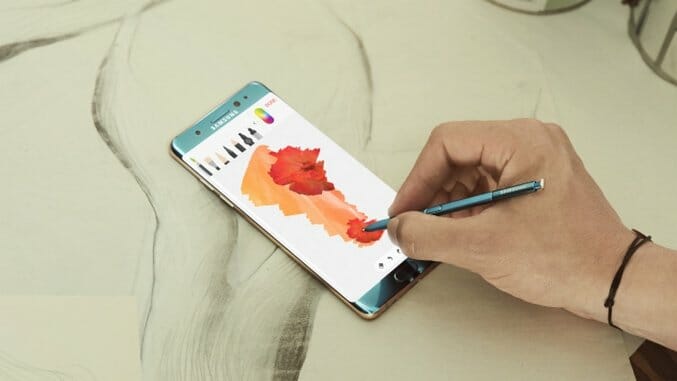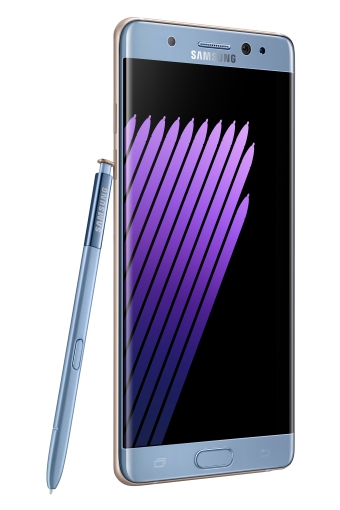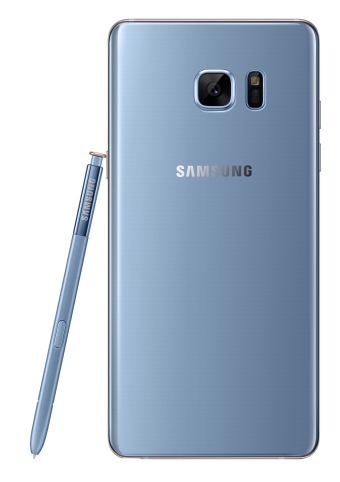Do We Still Need the Galaxy Note?

Yesterday, Samsung announced the latest Galaxy Note. As has become the custom, with smartphones in an era of maturity that does not lend itself well to innovation, the brand new Note 7 offers little in the way of excitement.
If you’re a diehard Note fan, the latest installment has enough of the line’s core features to entice you. It’s a handsome device with a large, gorgeous QHD Super AMOLED display, a super fast processor, healthy 4GB of RAM and, of course, the S Pen stylus.
It is also nearly identical to the Galaxy S7 Edge. Which begs the question: do we still need the Galaxy Note?
This year, the Note 7 does not offer the usual bump in specifications that has become synonymous with the line since the Note 2. Generally, Samsung releases the latest S phone in the Spring, and the newest Note in the Fall. The latter of the two brings a bigger screen, more RAM, a better processor.
Over the years, the Note has been considered the phone for “power-users,” but at this point in the life of the smartphone, nearly every flagship has enough on board to satisfy every type of user. Many expected the Note 7 to come with a Snapdragon 823 processor and 6GB of RAM, but Samsung opted not to juice up its specs.
 Thus, while it is still a phone with enough power to satisfy the heaviest of users, the Note 7 has taken a clear step back in Samsung’s lineup. As Forbes states, the Note used to be the top-of-the-line offering from Samsung, giving the company two definite flagships with their own set of appealing features. New Samsung mobile chief DJ Koh seems intent on making one clear flagship for the company, and having the rest of the portfolio exist in support of the premiere line.
Thus, while it is still a phone with enough power to satisfy the heaviest of users, the Note 7 has taken a clear step back in Samsung’s lineup. As Forbes states, the Note used to be the top-of-the-line offering from Samsung, giving the company two definite flagships with their own set of appealing features. New Samsung mobile chief DJ Koh seems intent on making one clear flagship for the company, and having the rest of the portfolio exist in support of the premiere line.
That is evident when you place the Note 7 and S7 Edge side-by-side. Save for a slight difference in size and internal memory, the two devices are largely the same. They have the same resolution, same camera system, same curved display, same processor and RAM.
Besides one other new feature that we’ll get to in a moment, the S Pen is the biggest draw the Note 7 has. The stylus always offered users a wholly distinct set of features not found on other smartphones, but are those features enough to warrant a completely separate line? There are some entrenched users, but many employ it only occasionally, or hardly ever at all. Instead, people often find their use of the S Pen diminishes after the initial excitement wears off.
The pen is better than ever on the Note 7, with a significantly finer point (just 0.7mm), water resistance and a host of new features including a clever GIF creation tool. You also can no longer stick it in backwards and ruin everything. Still, even with the host of improvements, the S Pen is not the kind of killer feature that alone can make the case for keeping the Note alive.
-

-

-

-

-

-

-

-

-

-

-

-

-

-

-

-

-

-

-

-

-

-

-

-

-

-

-

-

-

-

-

-

-

-

-

-

-

-

-

-

 Experimental tech.
Experimental tech. The Note would be a perfect spot for Samsung to put its experimental energy. If it’s going to play second fiddle to the S line from now on, why not at least be on the cutting edge of smartphone technology? Even if it means a few swings and misses, it’ll give the storied phablet a renewed sense of excitement rather than a destiny of spending years as a larger version of the S Edge with a stylus.
The Note would be a perfect spot for Samsung to put its experimental energy. If it’s going to play second fiddle to the S line from now on, why not at least be on the cutting edge of smartphone technology? Even if it means a few swings and misses, it’ll give the storied phablet a renewed sense of excitement rather than a destiny of spending years as a larger version of the S Edge with a stylus.






































